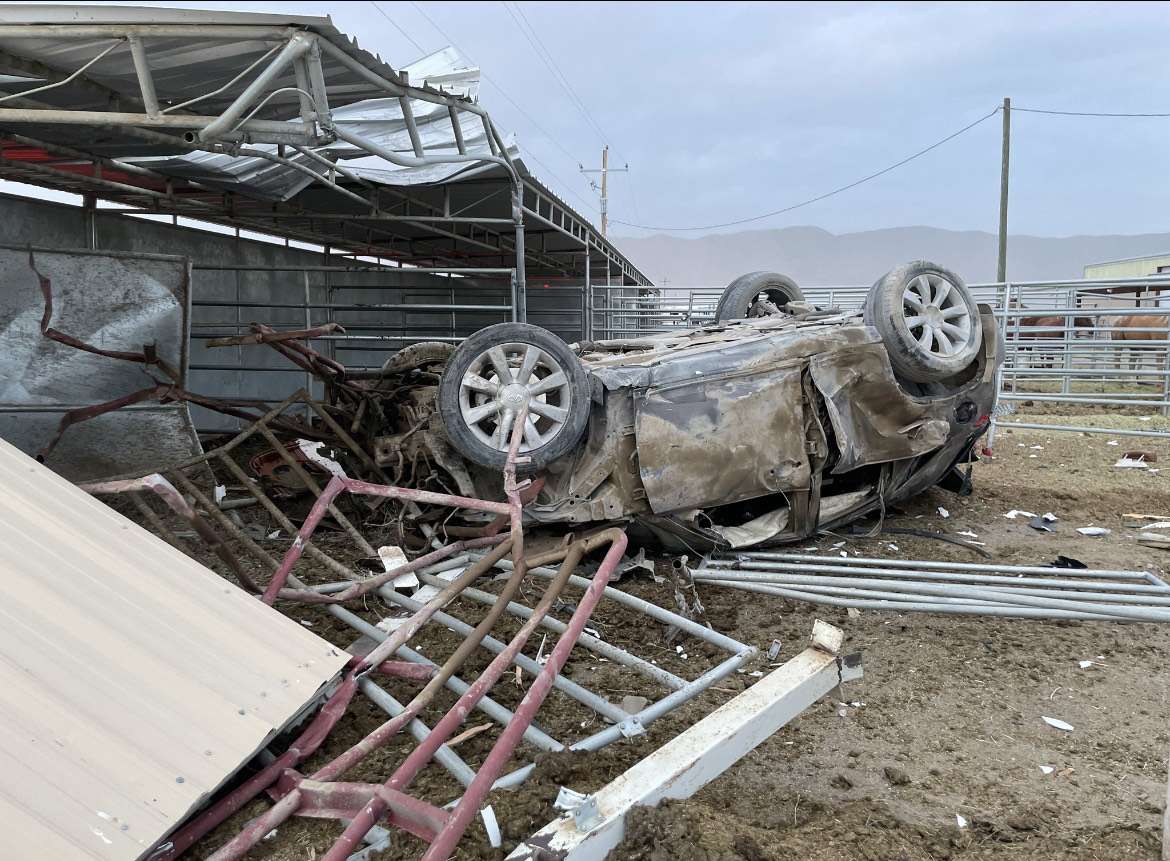PROVO — Robert Ratliff was working when he received a call from his wife shortly after 7 p.m. on May 2, 2022. He testified on Wednesday that he had to ask her to repeat herself a few times before he eventually understood that their son was dead, and he needed to get to Cedar Valley Stables.
He dropped what he was doing and drove the five minutes to the stables at 2333 N. 16000 West, in Eagle Mountain. He said he ran past an officer who was setting up a roadblock to protect the scene of the deadly crash. When the officer tried to stop him to see who he was, he told her he was family and needed to get in.
Ratliff told the attorney questioning him that he was not going to stop for her; he didn’t care about the crime scene as he climbed over a fence. The father was seen running by in body camera footage taken by another officer.
“I was just dead set on finding my wife,” he said.
Ratliff said he didn’t leave the site until between 3 a.m. and 5 a.m. the next morning because he was waiting for the bodies of two children, including his son, 3-year-old Odin Ratliff, to be taken from the scene.
Odin and his friend Hunter Jackson, also 3 years old, were killed when Kent Cody Barlow drove a car into Cedar Valley Stables, breaking down layers of fences and knocking down horse stalls.
Based on a ruling from 4th District Judge Derek Pullan shortly before his testimony, Ratliff was not asked much about his son.
The judge ruled that further testimony about Odin and his love of horses would not add information the jury needs for their decision and could cause additional risk for a decision based on emotion. Instead, Ratliff testified that he agreed with what his wife shared in her testimony on the first day of the trial.
Deputy Utah County attorney Ryan McBride said that he intended to call his final witness on Wednesday in Barlow’s jury trial, and although he has not yet officially rested his case, it appears Ratliff may be that final witness. The judge told jurors that defense witnesses are scheduled to take the stand beginning on Thursday.
Barlow, 28, is charged with two counts of depraved indifference murder, a first-degree felony, along with possession or use of a controlled substance, a class A misdemeanor. His attorney, Justin Morrison, asked the jurors listening to the case to find Barlow guilty of lesser charges of manslaughter or automobile homicide instead of murder.
Destruction
Travis Ashdown, a digital forensics analyst, testified Wednesday about calculating the speed of Barlow’s car from GPS locations on Barlow’s cellphone and those of his passengers. He said at an intersection right before the crash, Barlow was moving 122 mph; as he left the road, he was traveling at 117 mph.
Utah County sheriff’s detective Jake Hall, the lead agent in the case, testified about looking over the crash scene. He said it looked like the vinyl fence “exploded all over the road.”
“I’ve never seen destruction like this on an accident. I’ve never seen a car as mangled,” he said.
Hall said, at one point, he needed to take a break from the emotions of the scene and went for a walk around the stable. He said he didn’t know what had hit the boys, and he was not able to find a piece of the car with any biological material showing what had hit them.
Hall said all of the biological material investigators found was located within a few feet of where the boys’ bodies were found. He said he did not find anything on pieces of the roof that had fallen, which might show they had hit the children.
The officer said he helped firefighters prop up the roof so they could retrieve the bodies after photos and scans of the scene were acquired.

Hit by the car or the roof?
Brent Davis, assistant medical examiner for Utah, said he ruled the boys’ deaths accidental from blunt force injuries, saying auto-pedestrian collisions would rarely be labeled as a homicide.
From his autopsies, he said he found both boys had significant scalp, skull and brain trauma — which would have required “a tremendous amount of force” and is not something he typically sees. Blood in the chest cavity of one of the boys showed there was an energy applied to his chest that suddenly stopped, which Davis said is common in vehicle crashes, and he testified both boys had multiple lacerations going in the opposite direction of lacerations on their heads.
“This, to me, is consistent with a vehicle hitting them in the top of their heads, and then them being thrown or drug,” Davis testified.
Family members of the boys were crying in the courtroom as Davis pointed out lacerations on photos of the boys’ bodies, which were shown only to attorneys and the jury.

Davis said the boys’ clothing did not have any defects, which would be unusual for being hit by a car, but he said that could be due to the soft sand they were on when they were hit rather than hard pavement. He said he does not think their injuries could have been caused by a collapsed roof.
Lt. Chris Chambers with the Provo Police Department disagreed. He said the boys’ shoes were right next to their bodies, but it is his experience that shoes are often thrown off a person in an auto-pedestrian crash and found far away.
“I didn’t feel like the vehicle had hit the children,” he said.
Chambers said he thought the visible injuries on the boys matched more closely with support beams from the roof falling down on top of them. He said he believes “with reasonable certainty” the boys were playing in the same place where their bodies were found.
Chambers helped reconstruct the accident and said that with the various textures of material the car went through after it left the road, it was hard to calculate its speed. He said the car moved through different types of dirt and various structures, which absorbed a lot of its energy.
Blood and DNA tests
Nghia Nguyen, a forensic toxicologist for Utah, testified on Tuesday that he found a 684 nanogram per milliliter amount of methamphetamine in Barlow’s blood, which was on the higher end of the range that he would expect to find. He said this is a fairly high amount, but he believes that depending on someone’s usage history, they could still be relatively functional.
He told jurors that meth can lead to hallucination, increased heart rate and risk-taking behavior while not having many medicinal benefits.
Samantha Hammond, a forensic scientist with the Utah Department of Public Safety, testified that she found DNA matching Barlow on a glass pipe at the scene of the crash. Another witness testified earlier this week that the same pipe tested positive for methamphetamine. The pipe was found buried in horse manure over a week after the crash occurred by a volunteer who was helping clean up stables.
The Key Takeaways for this article were generated with the assistance of large language models and reviewed by our editorial team. The article, itself, is solely human-written.




